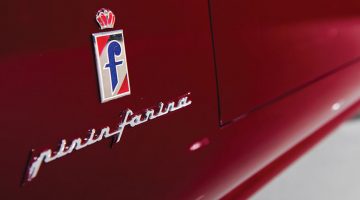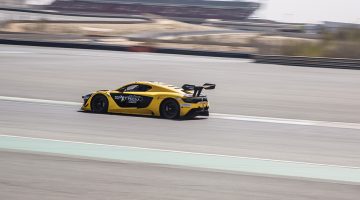crankandpiston visits the Maserati collection of the Panini Motor Museum outside Modena, Italy.
[Not a valid template]Nestled in the countryside, on a dairy farm just outside Modena, Italy, is one of the greatest collections of classic and historically noteworthy Maseratis in the world. The collection was started by the brothers Maserati and expanded under the ownership of both Omar Orsi and Alejandro de Tomaso. However, when Fiat took grasp of the Trident in 1993, Alejandro de Tomaso retained the collection.
When news broke out that the entire collection was due to be put under the hammer – at London auction house Brooks in 1997 – there was an outcry from the good folk of Modena. Their voices were joined by ex-racing drivers, Registro Maserati, Club Maserati, Council of Modena, the local and national press, and even the Italian Minister of Culture. A hero was needed to keep the pride of Maserati in Modena. Enter Umberto Panini.
If you were interested in grown men kicking a ball around a field when you were younger to the extent that you bought a book – and the little packet of stickers to stick in it – then the Panini name should be familiar. Now that you have grown up, put away childish things and have petrol running through your veins it must be heartening to know that the Panini Group profits from your pocket money were put to good use. Umberto Panini – one of the Panini brothers who ran the publishing company – stepped in, bought the collection and housed them in a purpose built museum on his dairy farm and there was much rejoicing across the land.
Available for viewing by appointment only, the collection contains many of the most stunningly beautiful – and rare – Maseratis ever produced. A Tipo 6CM, Tipo 6C/34, Tipo 61 (Drogo) ‘Birdcage’ and an ex-Scuderia Serenissima, V12 Tipo 63 in a central row comprises probably the most impressive line-up of classic racing Maseratis I have ever seen. Actually, scrub that, it is the most impressive.
Spanning one side of the museum is a selection of classic cars and bikes from various manufacturers, however, the other is completely devoted to Maserati. Ranging from an A6GCS Berlinetta by Pininfarina – one of only four ever produced and jaw-hitting-floor gorgeous – to the square-edged design of a series of De Tomaso era wedges that I can’t help but fall in love with their angular beauty.
Climbing the stairs reveals something I most definitely wasn’t expecting; the Maserati Chubasco. This is the original Marcello Gandini-designed mock up and the only one ever built. Unveiled in 1990 with production planned for 1992, it was to feature a wide range of innovative technology but sadly proved too expensive to build. Much of the technology did find its way in to the Carlo Gaino- designed Barchetta, a prototype of which sits back to back with the Chubasco.
Within the museum there is also a vast collection of motorcycles including (naturally) two fine specimens by Maserati: a T4 and a T2 I believe although I am far from certain. This is not the type of museum that provides name plaques for the knowledge deficient. There are other historic race and road cars inside and even a collection of tractors line the outside wall with a Lamborghini taking pride of place beside the entrance.
Unfortunately, two of the collection’s greatest cars were not on display. They are the 250F – one of the greatest Maserati race cars ever produced – and 420M/58 ‘Eldorado’ – the only one ever built which was raced by Sir Stirling Moss in the 500 Miglia di Monza. A revisit to the Panini Museum will therefore be necessary when I return to Italy.
Thanks to the Panini Motor Museum and Maserati Middle East, Africa & India



